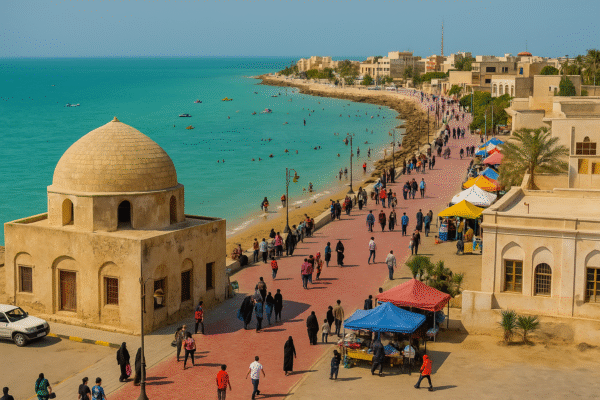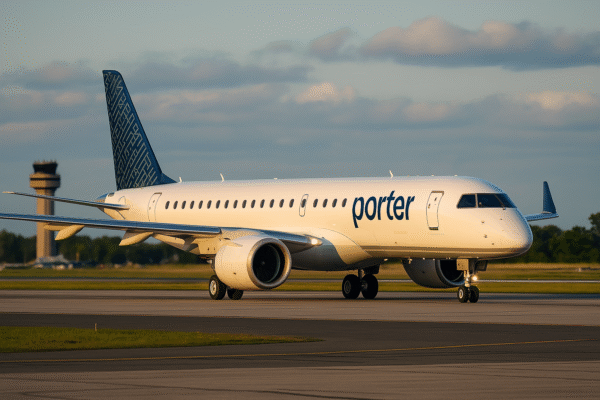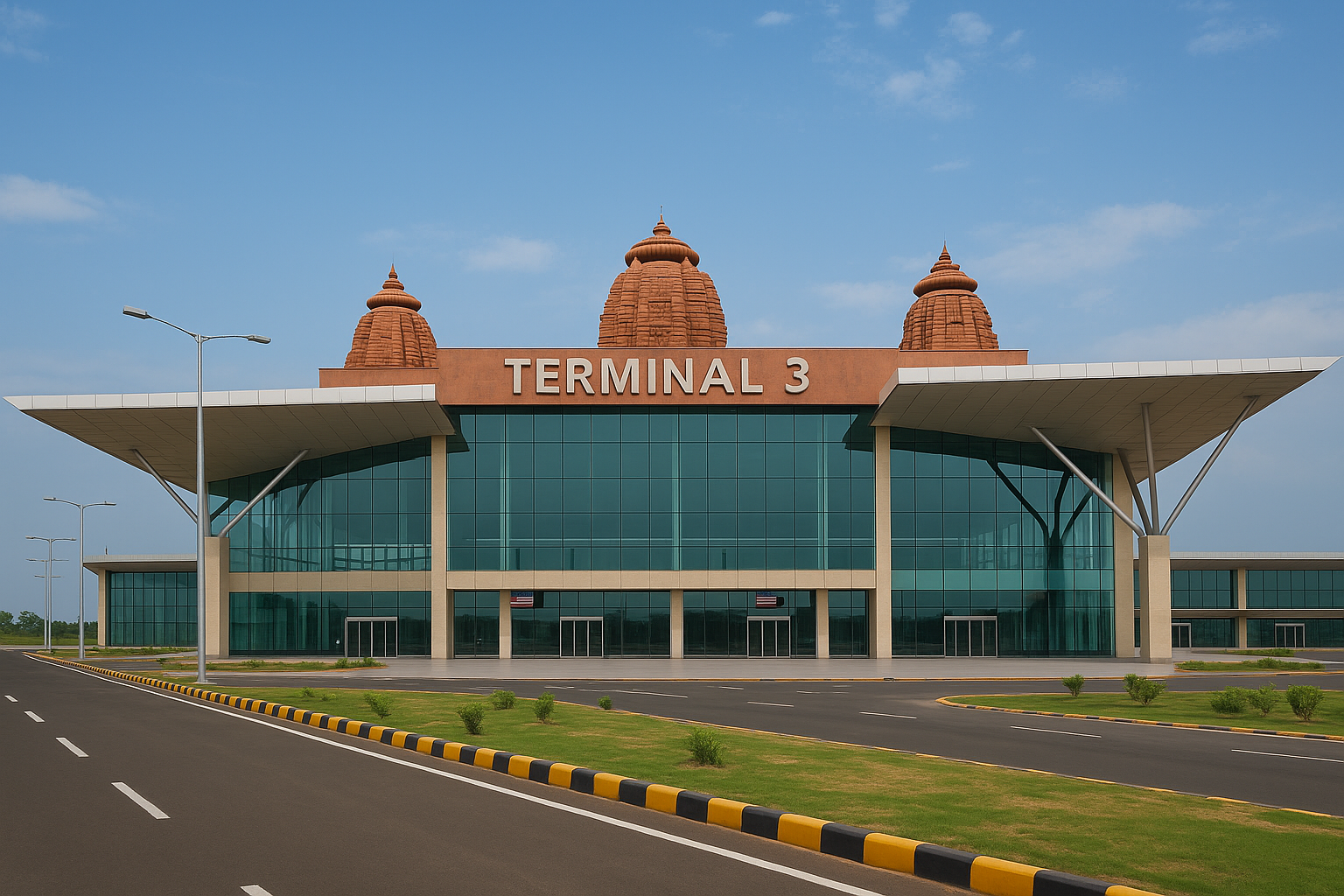In a landmark move to upgrade its aviation infrastructure and accommodate rising passenger traffic, Bhubaneswar’s Biju Patnaik International Airport (BPIA) has officially launched the development of its much-anticipated integrated Terminal 3 (T3). This transformative infrastructure project, valued at approximately ₹1,000 crore, is poised to dramatically improve operational efficiency, sustainability, and traveler experience in the state capital of Odisha.
Spanning a built-up area of 65,000 square meters, the upcoming T3 terminal is designed to handle 8.6 million passengers annually and up to 3,000 passengers per hour at peak times. Unlike the existing bifurcated system—with Terminal 1 (domestic) and Terminal 2 (international)—the new T3 will consolidate both arrival and departure services into a single facility. This integration marks a significant step toward streamlined airport operations and modern traveler convenience.
Meeting Growing Passenger Demand
Bhubaneswar’s BPIA has witnessed significant growth in domestic and regional air travel in recent years. Daily footfall now exceeds 15,000 passengers, exceeding the airport’s current design capacity. The need for an expansion has become urgent, especially with new flight routes connecting Bhubaneswar to cities such as Patna, Kochi, Lucknow, Jaipur, Dehradun, and Indore.
With six new aerobridges planned as part of the T3 development, the total number of aircraft bays at the airport will rise to 24. This enhancement is expected to reduce congestion and improve turnaround times, making BPIA a more competitive and efficient hub in eastern India.
A Terminal Designed for All
Accessibility and inclusivity are at the heart of the T3 project. The terminal will feature gender-neutral lounges, barrier-free pathways, and fully accessible concourses designed to meet the needs of differently-abled travelers. These enhancements reflect a progressive approach to infrastructure that prioritizes user experience for all, regardless of ability or identity.
Odisha’s Department of Urban Development has emphasized that the T3 terminal is part of the state’s broader mission to develop inclusive and equitable urban spaces that serve the diverse needs of residents and visitors alike.
Sustainability at Its Core
A standout feature of the T3 terminal is its commitment to sustainability. The terminal will employ a zero-net carbon framework incorporating energy-efficient HVAC systems, LED lighting, solar photovoltaic panels, and advanced water recycling mechanisms. According to the Airports Authority of India (AAI), the project will adhere to GRIHA (Green Rating for Integrated Habitat Assessment) norms, a national benchmark for sustainable construction in India.
The terminal’s design also takes Odisha’s monsoon-heavy climate into account. Measures such as stormwater management systems, monsoon-resistant materials, and elevated structural planning are being implemented to ensure operational resilience throughout the year.
Enhancing Safety and Connectivity
To complement the physical expansion, BPIA will soon be upgraded with Category II Instrument Landing System (CAT-2 ILS) lighting, allowing aircraft to land safely even in low-visibility conditions—particularly crucial during the monsoon season. AAI is working with local authorities to remove runway obstructions, such as unauthorized buildings and vegetation, which currently impede the full implementation of these safety upgrades.
The T3 terminal is also a critical node in Odisha’s wider air connectivity roadmap. The state government has proposed the development of two new Greenfield airports in Paradip and Puri to support its expanding industrial and tourism sectors. Once completed, these new airfields will work in tandem with BPIA to strengthen Odisha’s integration with national and international air corridors.
Celebrating Odisha’s Culture
Beyond its structural innovation, the T3 terminal is envisioned as a cultural landmark. The architectural blueprint includes aesthetic elements inspired by Odisha’s iconic temple architecture, such as motifs from the Sun Temple in Konark and Lingaraja Temple in Bhubaneswar. This design approach aims to offer passengers a unique sense of place while promoting Odisha’s rich cultural heritage.
Furthermore, the terminal will host commercial and retail spaces dedicated to showcasing locally made products, handicrafts, and artisanal goods. Initiatives are in place to prioritize women-led enterprises and tribal artisans, boosting micro-entrepreneurship and community participation in the tourism economy.
Planning for Balanced Urban Development
The ₹1,000 crore T3 project, while ambitious, also faces complex challenges. Land acquisition for runway extension, zoning conflicts near the airport, and rapid urban sprawl require close coordination among civic planners, state departments, and aviation regulators. Authorities are currently reviewing buffer zones and flight path safety guidelines to align with the Directorate General of Civil Aviation (DGCA) regulations.
Odisha’s Chief Secretary has underscored the importance of completing the T3 terminal within the scheduled timeline to avoid cost overruns and disruptions to airport services. A phased execution strategy is being adopted to ensure smooth transitions without compromising existing operations.
A Strategic Leap for Odisha’s Tourism and Economy
With a booming hospitality sector and rising tourist arrivals—thanks to iconic sites like Puri’s Jagannath Temple and Chilika Lake—Odisha is strategically positioning Bhubaneswar as a premier gateway for both leisure and business travel. The T3 terminal, with its integrated design, sustainability focus, and inclusive features, is set to elevate BPIA into a major aviation hub in eastern India.
Once operational, the new terminal will not only redefine the air travel experience in Odisha but also serve as a model for other mid-sized Indian cities aiming to modernize their aviation infrastructure while celebrating their cultural identity.
For more travel news like this, keep reading Global Travel Wire

















